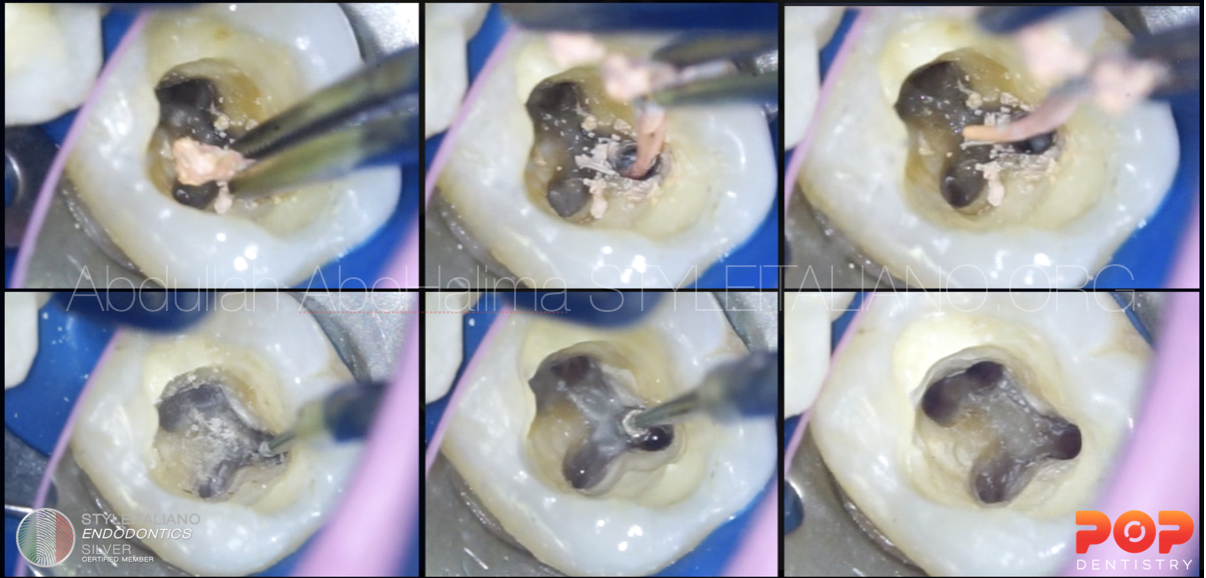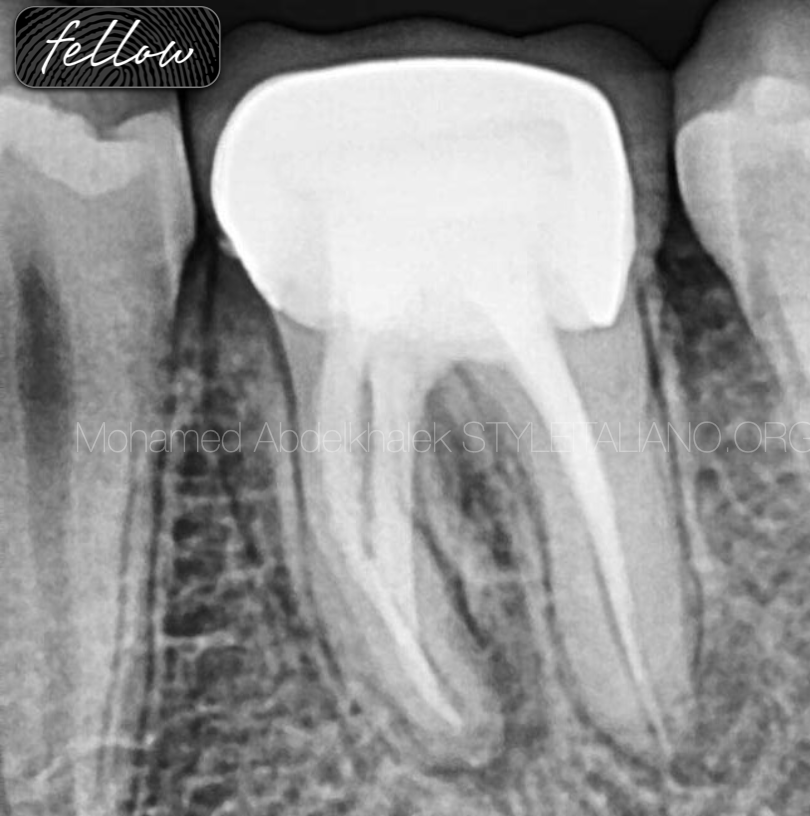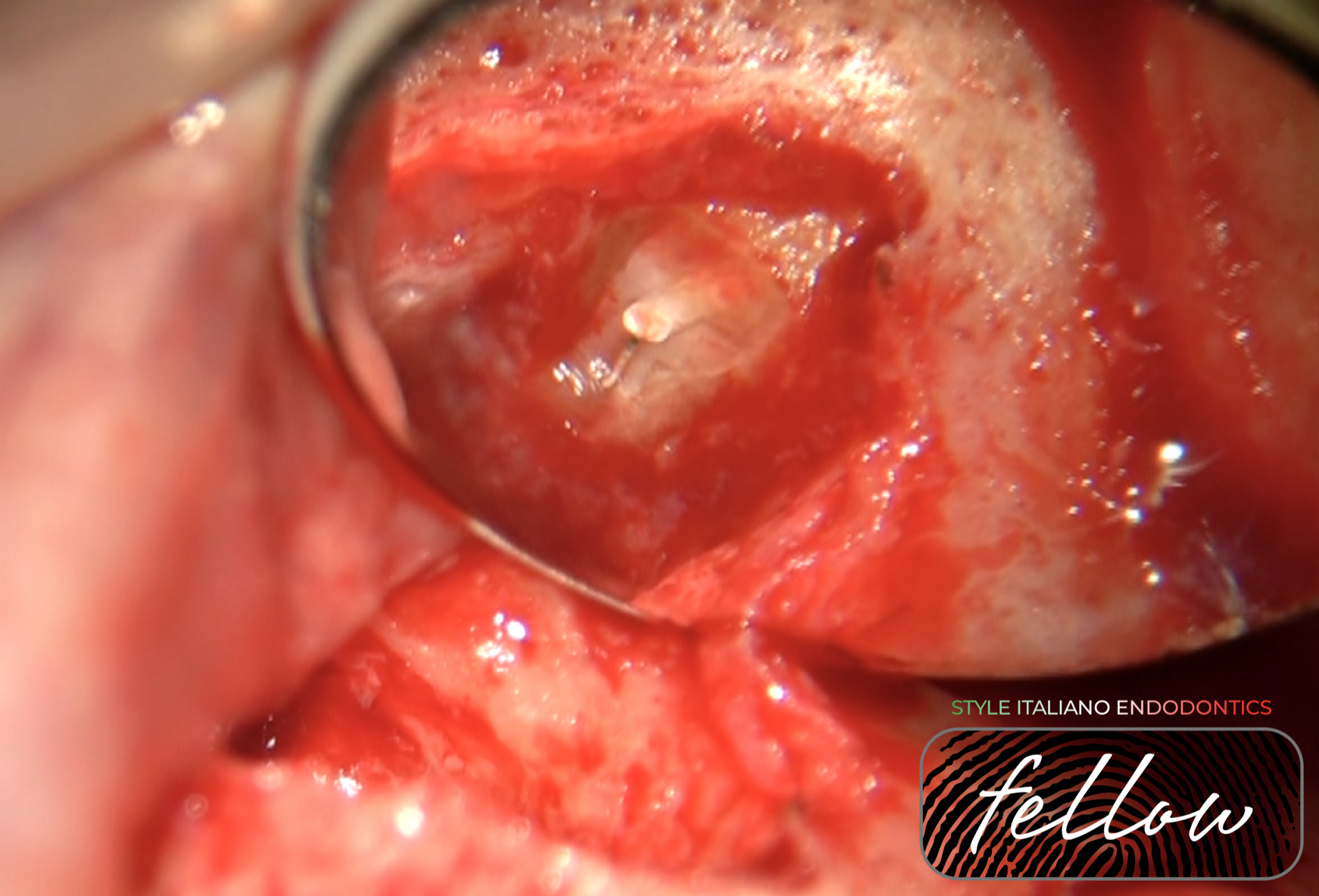
Retreatment case:Metal post removal and deep splitting canal Retreatment case:
10/06/2024
Fellow
Warning: Undefined variable $post in /var/www/vhosts/styleitaliano-endodontics.org/endodontics.styleitaliano.org/wp-content/plugins/oxygen/component-framework/components/classes/code-block.class.php(133) : eval()'d code on line 2
Warning: Attempt to read property "ID" on null in /var/www/vhosts/styleitaliano-endodontics.org/endodontics.styleitaliano.org/wp-content/plugins/oxygen/component-framework/components/classes/code-block.class.php(133) : eval()'d code on line 2
There are four options for managing a tooth with posttreatment disease: do nothing, extraction, nonsurgical retreatment, or surgical treatment. Avoiding treatment may result in the progression of disease and continued destruction of supporting tissues, as well as possible acute exacerbation of systemic side effects, such as cellulitis and/or lymphadenopathy. In most cases, these options are unacceptable. Extraction and replacement is a viable option, but replacements for missing teeth are rarely better than an otherwise restorable natural tooth and nonreplacement usually results in unfavorable alternations in the adjacent dentition and surrounding tissues, as well as possible diminution of masticatory function. The decision of whether to perform nonsurgical or surgical retreatment to retain the tooth is also complex. For most cases, the clinician needs to decide if retention of the tooth is in the patient’s best interest. This is based on the restorability of the tooth and its strategic position in the dentition, periodontal health, the patient’s health history, motivation and desires, and the skill level of the dentist.
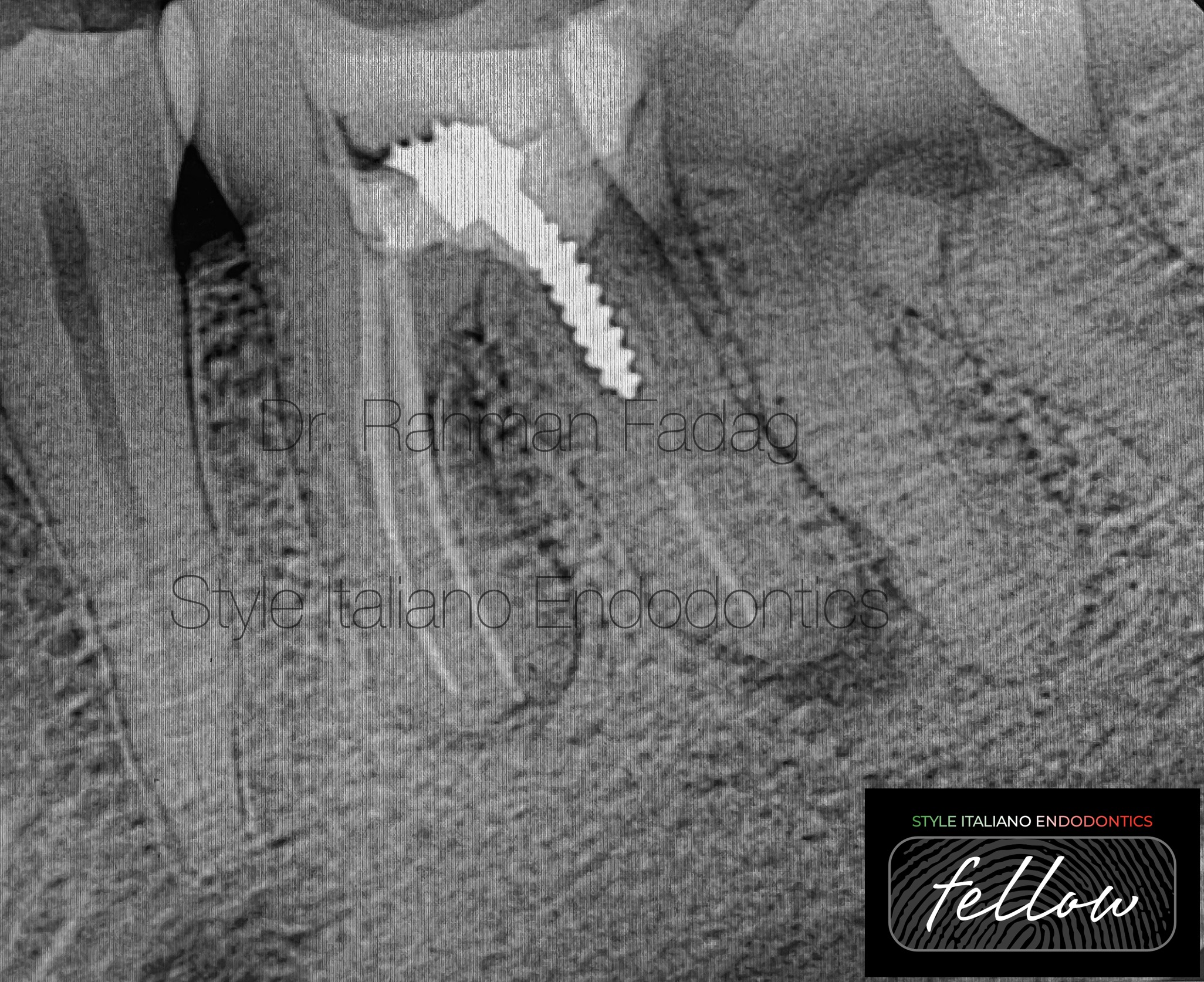
Fig. 1
The procedures for endodontic nonsurgical retreatment can be grouped into disassembly, access to missed anatomy, shaping and disinfection of the canal system, and obturation. While cleaning, shaping and disinfecting the root canal space in retreatment can be similar to initial root canal therapy, location and treatment of missed anatomy, disassembly are complex procedures that require a specialized armamentarium and knowledge. The dental operating microscope allows clinicians to visualize the contents of canals and endodontic access preparations better than with loupes or the naked eye,and supports delicate retreatment procedures that cannot be accomplished by other means.
Without the dental operating microscope and CBCT imaging, retreatment at the highest level is difficult — and sometimes impossible — to achieve.
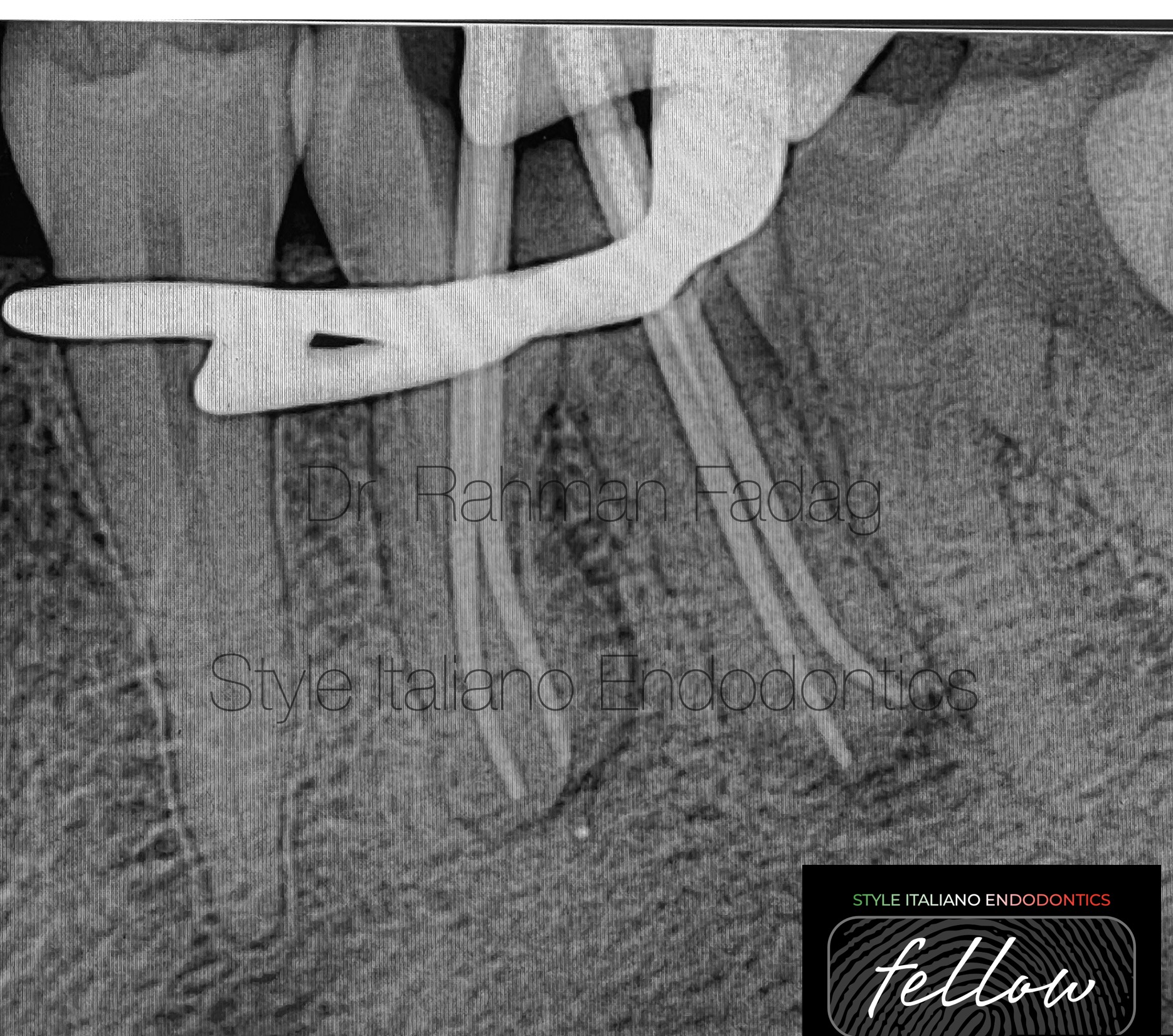
Fig. 2
Post retrieval requires careful use of ultrasonic instruments to remove surrounding core material and disrupt the intracanal cement seal around the post. Care must be taken to avoid overheating the post because heat transmitted to the ligament during post removal may cause large areas of bone destruction and tooth loss.
Intermittent application of the ultrasonic tip, along with copious air/water coolant spray, are necessary. There are numerous other instruments and techniques that can aid in the removal of a post, and the clinician should have training in, and access to, a wide selection to be able to retrieve posts in all situations
Stieglitz forceps is used to grip and unthread screw post in an anticlockwise direction. Small, gentle, alternating rotations should be used along with adequate finger support buccally/labially and palatally to help detect any tooth movement.
Following post retrieval, removal of preexisting root filling materials is necessary. The technique varies depending on the materials found in the canals. Retreatment files from D-Perfect were used in this case.
After disassembly is complete, canals should be cleaned thoroughly and shaped for reception of new obturation materials. You can see clearly the deep split in the distal root after complete debridement and cleaning.

Fig. 3
The final step in retreatment is to thoroughly disinfect and three-dimensionally obturate the canal space.

Fig. 4
Academically: I Obtained my PhD degree in Endodontics from Faculty of Dentistry, Ain shams University, Egypt in 2021.
Clinically: My Master thesis has been focused on the ability of different types of posts to reinforce endodontically treated teeth (an in vitro study)
My PhD thesis has been focused on the evaluation of bacterial reduction and post operative
pain after cleaning and shaping of root canals with single file systems used in different kinematics. an in vivo study
Research activities: I have published many articles in Scopus index journals which included the Master and PhD articles.
Conclusions
- Non-surgical root canal retreatment can be done perfectly before moving to the surgical approach.
- Missed canals are considered one of the most causes of endodontic failure.
- Three dimensional filling of the root Canals is necessary to obtain favorable outcomes.
Bibliography
- Iqbal MK, Kim S. For teeth requiring endodontic treatment, what are the differences in outcomes of restored endodontically treated teeth compared to implant-supported restorations? Int J Oral Maxillofac Implants. 2007;22(Suppl):96–116.
- Buoncristiani J, Seto BG, Caputo AA. Evaluation of ultrasonic and sonic instruments for intraradicular post removal. J Endod. 1994;20:486–489.
- Jafarzadeh H, Abbott PV. Ledge formation: review of a great challenge in endodontics. J Endod. 2007;33:1155–1162.
- Friedman S, Mor C. The success of endodontic therapy — healing and functionality. J Calif Dent Assoc. 2004;32:493–503.
- Budd JC, Gekelman D, White JM. Temperature rise of the post and on the root surface during ultrasonic post removal. Int Endod J. 2005;38:705–711.



